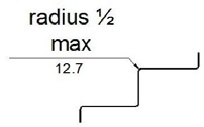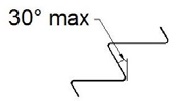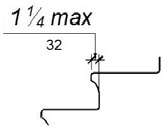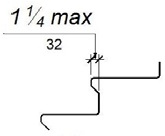2016 California Standards for Accessible Design Pocket Guide - Eff. Jan. 1, 2017
11B-504.5 Nosings.
The radius of curvature at the leading edge of the tread shall be ½ inch (12.7 mm) maximum. Nosings that project beyond risers shall have the underside of the leading edge curved or beveled. Risers shall be permitted to slope under the tread at an angle of 30 degrees maximum from vertical. The permitted projection of the nosing shall extend 1¼ inches (32 mm) maximum over the tread below.
Exception: In existing buildings there is no requirement to retroactively alter existing nosing projections of 1½ inches (38 mm) which were constructed in compliance with the building code in effect at the time of original construction.

Additionally, because it is possible to catch the top of one’s shoe on the underside of stair nosings, access compliance regulations require the underside of nosings to be free of abrupt changes – a beveled slope or non-square underside. ◼

(a)
radius of tread edge
(typical for all profiles)

(b)
angled riser

(c)
curved nosing

(d)
beveled nosing
FIGURE 11B-504.5 ‡‡
STAIR NOSINGS

User Comments/Questions
Add Comment/Question